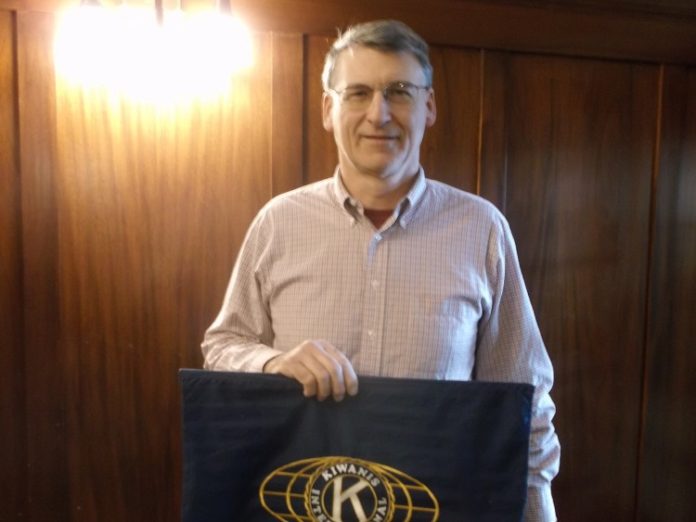
Farming is a vital part of the world’s food supply. The Perry Kiwanis Club learned Tuesday about farming’s role in feeding the world from local farmer and 25-year Perry Kiwanian Tom Vincent, who addressed the weekly luncheon group about farming and water quality.
Vincent’s talk was entitled “Water, Farming and You.” He said he had the topic of water quality and its relation to farming on his mind for several years and so obtained information from the Iowa Soybean Association, which works with farmers on water quality.
Vincent said he even put into practice on ground he farms some of the water-quality improvements he learned from the soybean organization.
He noted that 75 percent of the Earth’s surface is covered by water, while less than 3 percent of the water on the earth is fresh and drinkable. Less than 4 percent of the earth’s service area is able to be farmed for food and fiber production.
By 2050, an estimated 9 billion people will live on the earth, Vincent said, and they will need to be fed, clothed and given adequate food and fresh water.
Vincent said the U.S. Department of Agriculture has a goal of reducing nitrogen and phosphorus in the water by 65 percent. He is hoping other farmers will jump on board with water quality improvement technologies on their own instead of having “the heavy hand of government” telling private farmers what they have to do.
He said land in this part of the state has to be drained by field tiles. Otherwise, it would not be able to be farmed. The pollution that is carried by field tiles is nitrogen and phosphorus, which leach out of the soil and into the water runoff and thus into area streams and rivers and also into ground water.
Vincent also said some of the nitrogen controversy is exaggerated. When nitrogen is applied, 70 percent to 80 percent of it ultimately evaporates. Even if the land were left in its natural state and had native plant life, there would still be some nitrogen released from the native plants, although not as much as there when applied by farmers, he said.
Vincent sketched out three different pollution-reduction plans that farmers could put into place and then described the one he put into place on his land. The three items discussed were bioreactors, saturated buffer strips and cover crops.
The bioreactor method uses pits 40 feet deep and 80 feet wide that are filled with wood chips placed at the end of the tile hole. The wood chips absorb the water runoff and ultimately remove the nitrogen. The chips need to be replaced every seven to eight years, and the chips can be spread upon the land and become part of the soil.
Cover crops are crops that are planted after harvest. The plants grow and die off. They ultimately consume 50 percent to 75 percent of the nitrogen.
In his case, Vincent used a saturated buffer strip.
“Saturated buffers store water within the soil of field buffers by diverting tile water into shallow lateral control structures that raise the water table and slow outflow,” he said.
Water from the drainage is forced back onto the buffer strips, which capture nitrogen in the untiled areas and grassy plants planted on these strips.
Vincent said he and another land owner installed their saturated buffers in August 2016 on land located near Iowa Highway 141 and F Avenue. It cost $20,000 for 160 acres, which Vincent stated is relatively inexpensive for this type of project.
He said there is not a lot of governmental money for water-quality projects such as those he discussed. He said the Iowa Ag Water Alliance is a group of farm implement dealers who are funding water improvement technologies.
Vincent said he is also looking at other ways to conserve soil and cut down on pollution with farming. He is looking at trying strip tillage in the near future along with keeping his eyes out for other improved farming methods.

















Good article and I applaud Mr. Vincent for installing a saturated buffer. I do take exception, though, with the comment that farm land here could not be farmed without the use of underground tiles as farming was done for decades before tiles were installed. Tiles are simply a way to control soil moisture and are an important management tool but as indicated in the article, we must now find ways to control the nitrates and phosphorus exiting those tiles. With that in mind, every acre of farm ground holds 10,000 lbs of organic nitrates naturally, and farmers typically only add about 150 lbs. per acre.